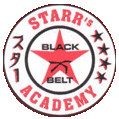Tenchijin Genron
天地人 原論
The Principles of Heaven, Earth, and Man
This page contains additional material that is not listed in the curriculum, but is valuable for your advancement in the study of the martial arts.
Ten Principles of Bunkai
Principle 1 – blocking/redirecting/offbalancing
Principle 2 – drive your opponent back
Principle 3 – posture and balance
Principle 4 – kakie
Principle 5 – resistance
Principle 6 – open/close
Principle 7 – high/low
Principle 8 – timing
Principle 9 – distance
Principle 10 – over/under
The Cornerstones of Goju Ryu Karate
Sanchin
is the kata at the core of Goju-Ryu. All of the masters universally agreed that it is the most important kata. Chojun Miyagi even stated that if all you practiced was Sanchin it would be enough. Others have also stated “all is in Sanchin”. How did Sanchin appear on Okinawa, and what is its purpose?
Kanryo Higaonna was likely one of the first people to bring this kata to Okinawa. Kanryo Higaonna had travelled to China in 1870. While there he studied southern Chinese martial arts, most likely white crane. This is supported by the fact that there is a very similar kata to Sanchin in modern white crane kung-fu. They seem to call it Sanzin. When Kanryo returned to Okinawa he taught the kata as part of his curriculum.
The Sanchin we practice today is not the same one from those days. The Sanchin of old was quicker, both in the strikes and in the breathing. Kanryo Higaonna slowed down the breathing and the techniques to emphasise the conditioning aspects. Karate was now being introduced to school children. It was now necessary to emphasise health and fitness rather than the martial(fighting) aspects. When Chojun Miyagi first travelled to China he noticed the their breathing was faster. When he returned he told his Sensei about what he saw and asked if he could learn it too. Kanryo simply told him he wasn’t ready yet.
Miyagi would later make his own changes too. The hand was eventually closed into a fist. The early Sanchin was done with open hands, similar to the opening of Shisochin. The closed fist was likely to make it more “Okinawan” and also due to the fact that the Makiwara was a popular training tool on Okinawa. More Okinawans would identify with a closed fist than an open one. More changes would also come after the war. Miyagi introduced a new version of Sanchin in which there were no turns.
